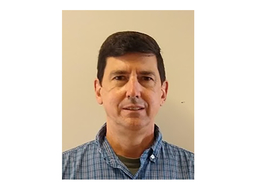PhD Proposal: Jeff Jaso
Location
Physics : 401
Date & Time
May 16, 2025, 11:00 am – 1:00 pm
Description
ADVISOR: Dr. Matthew Pelton
TITLE: A Quantum LiDAR Source Based on Multi-photon Entanglement
ABSTRACT: An effort began over a decade ago to use quantum technologies in LiDAR (Light Detection and Ranging) to improve the sensitivity and precision of measurements of low-reflecting targets in the presence of high background noise and to provide immunity to the effects of atmospheric turbulence. Unfortunately, the benefits of quantum LiDAR can currently be realized only with low-intensity light sources. The combined effects of low target reflectivity, scattering and absorption losses, and diffraction lead to a low photon detection rate, limiting the applicability of the technique. We propose a quantum source based on multiphoton entanglement that operates with a high intensity beam, thereby lifting the restriction on source intensity. We first demonstrate a feasible realization of quantum LiDAR using a hybrid detection scheme. A fiber ring cavity generates a continuous wave (CW) beam with correlations between photons occupying the same longitudinal cavity modes. A portion of the beam is coupled off and split into two paths: path 1 representing the round-trip path to a distant target in which the beam is attenuated down to the single-photon regime; and path 2 in which the beam is retained at the source at full intensity. An analog detector measures the intensity of the beam in path 2, while a single photon counter detects the arrival of single photons. The detector outputs are in turn measured by a high-speed mixed signal oscilloscope. A second-order time correlation (g(2)) calculation on the mixed analog and digital waveforms at the outputs of the detectors reveals a ghost time comb, which can be used to compute the distance to the target, for photon counts as low as 450. In a second experiment, we add entanglement to classical mode correlations by constructing an optical parametric oscillator (OPO), consisting of a spontaneous parametric downconverter (SPDC) embedded in a fiber ring cavity. The type II SPDC generates entangled pairs at twice the pump wavelength with orthogonal polarizations. We predict that the combination of entanglement and mode correlations will produce a 100% visibility in g(2), versus 50% for correlations alone. Replacing a fiber delay loop with a sample target on the optical bench, we will test the immunity of quantum correlations to atmospheric turbulence by introducing convection currents with a heat source in the free-space path. To confirm the presence of entanglement, with a slight modification of the setup we will perform a test to attempt to show a violation of Bell’s inequality.
TITLE: A Quantum LiDAR Source Based on Multi-photon Entanglement
ABSTRACT: An effort began over a decade ago to use quantum technologies in LiDAR (Light Detection and Ranging) to improve the sensitivity and precision of measurements of low-reflecting targets in the presence of high background noise and to provide immunity to the effects of atmospheric turbulence. Unfortunately, the benefits of quantum LiDAR can currently be realized only with low-intensity light sources. The combined effects of low target reflectivity, scattering and absorption losses, and diffraction lead to a low photon detection rate, limiting the applicability of the technique. We propose a quantum source based on multiphoton entanglement that operates with a high intensity beam, thereby lifting the restriction on source intensity. We first demonstrate a feasible realization of quantum LiDAR using a hybrid detection scheme. A fiber ring cavity generates a continuous wave (CW) beam with correlations between photons occupying the same longitudinal cavity modes. A portion of the beam is coupled off and split into two paths: path 1 representing the round-trip path to a distant target in which the beam is attenuated down to the single-photon regime; and path 2 in which the beam is retained at the source at full intensity. An analog detector measures the intensity of the beam in path 2, while a single photon counter detects the arrival of single photons. The detector outputs are in turn measured by a high-speed mixed signal oscilloscope. A second-order time correlation (g(2)) calculation on the mixed analog and digital waveforms at the outputs of the detectors reveals a ghost time comb, which can be used to compute the distance to the target, for photon counts as low as 450. In a second experiment, we add entanglement to classical mode correlations by constructing an optical parametric oscillator (OPO), consisting of a spontaneous parametric downconverter (SPDC) embedded in a fiber ring cavity. The type II SPDC generates entangled pairs at twice the pump wavelength with orthogonal polarizations. We predict that the combination of entanglement and mode correlations will produce a 100% visibility in g(2), versus 50% for correlations alone. Replacing a fiber delay loop with a sample target on the optical bench, we will test the immunity of quantum correlations to atmospheric turbulence by introducing convection currents with a heat source in the free-space path. To confirm the presence of entanglement, with a slight modification of the setup we will perform a test to attempt to show a violation of Bell’s inequality.
